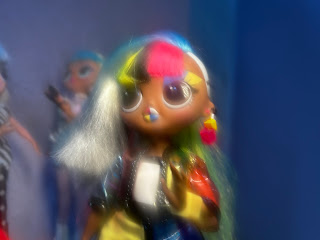Genre/Neale
For each trailer, do the following:
Everything, Everywhere, All at Once:
Identify what you believe to be the film's genre- Action or Sci-Fi
Explain which of the five conventions would be best used to determine the genre, and why-
I believe narrative considerations because we could already sense that action will be involved in the film, therefore we will expect the narrative structure to include the set up, which introduces the main characters, the setting and conflict. We also expect to see the confrontation which escalates the conflict and the resolution, which resolves the conflict, shows the consequences, and delivers the climax.
Which elements of text genre subversion seemingly apply to the film, and how?-
Cultural effects because throughout the film we begin to see how cultural trends, Asian culture in specific, affect the style of the production. It will also allow watchers to make connections to their prior knowledge of Asian cultural trends and that will shape how they view the film.
Apply at least one aspect of genre hybridity to the film and explain how it's relevant-
Sci-fi action is the genre hybridity which offers a thrilling escape into different dimensions, where the boundaries of science and technology are pushed to their limits, causing us to question is certain things are even possible in the real world. Often, the fate of humanity is pulled into the mix.
Phantom of the Paradise:
Identify what you believe to be the film's genre- Thriller/horror
Explain which of the five conventions would be best used to determine the genre, and why-
Character Conventions would be best used to determine the genre. Viewers can expect the film to deliver explicit character driven motifs based off the trailer. Since we can already see who the anti-hero of the film will be, we can make a judgement that the anti-hero will be the main character; and learn about the lead's tragic narrative journeys.
Which elements of text genre subversion seemingly apply to the film, and how?-
Social Context. The film draws heavily from classic gothic horror literature. Due to the Gothic horror roots, the characters are shaped to create representation that are relevant to the gothic horror literature. After doing some research, I have discovered that it takes heavy reference from the 1925 film, The Phantom of the Opera, therefore, the characters must be shaped to create the correct representation of the disfigured, masked composer who lurks in the shadows of a grand music hall.
Apply at least one aspect of genre hybridity to the film and explain how it's relevant-
Horror/Musical is the genre hybridity. The film satirizes the music industry by using classic gothic horror literature, which represents gothic romance and tragedy; rock opera musical which has loud, expressive music, often used to comment on the narrative. This is relevant because it exposes the nature of fame and the shallowness of success in the music industry, one instance, the film often claims of the main character "selling his soul" to the music industry.
Electric Dreams:
Identify what you believe to be the film's genre- Sci-fi
Explain which of the five conventions would be best used to determine the genre, and why-
Level of verisimilitude. Knowing that levels of verisimilitude is the degree in which a media product references the real world cam help us indicate that this film would be around sci-fi, fantasy and comedy. Only Science fiction and fantasy type films produce limited levels of verisimilitude.
Which elements of text genre subversion seemingly apply to the film, and how?-
Historical effects. By using common prior knowledge, viewers would know that computers actually became accessible to consumers as of early 1980s, and if we make the connection to the production of the film we can see that the film was released in 1984, in the peak years of when computers were commonly used. This historical event shaped the production of this film completely because it is based on the new coming of computers; since no one really knew much about them yet it creates a element of surprise throughout the film.
Apply at least one aspect of genre hybridity to the film and explain how it's relevant-
Sci-Fi and comedy is the genre of hybridity. Often in sci-fi films fictional computers are featured, as seen in this film when the computer can speak for itself and have its own though process which heavily effects the narrative. Additionally, sci-fi often explores how technological progress affects society, showing how society reacts the upbringing of computers.


.jpeg)









